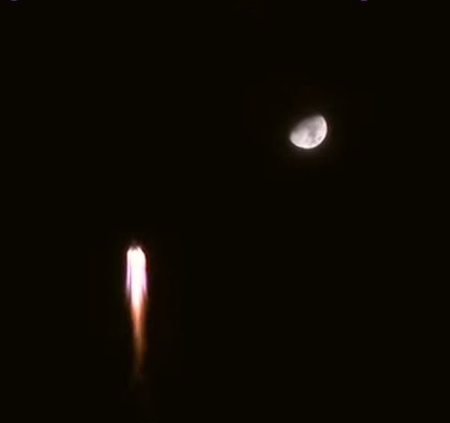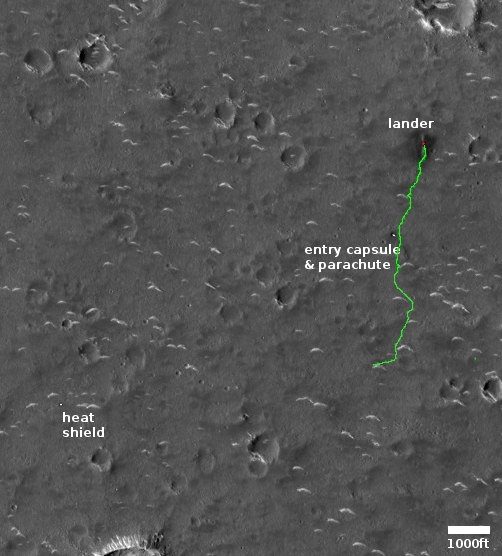VC of Joint Chiefs: Not one, not two, but “hundreds” of Chinese hypersonic tests!
If I did not have confirmation of my skepticism about the claims by the military and anonymous sources that China this summer completed a successful hypersonic test flight, I have it now.
Today the Vice Chairman of the Joint Chiefs of Staff, Gen. John Hyten, made a speech demanding that the military stop building expensive gold-plated satellites and emulate SpaceX’s methods of frequent testing and quick development.
Hyten has been very correctly pushing for this change in strategy for years. However, in his remarks he said this:
China, he said, has performed “hundreds” of tests of hypersonic weapons in the last five years, compared to nine the United States has performed.
…[He also] implied this morning, but did not state categorically, that China has built and tested what appears to be a Fractional Orbital Bombardment System (FOBS).
FOBS technology is not new, but Hyten described it “as highly destabilizing.” And China’s reported use of a nuclear-capable hypersonic glide vehicle (HGV) as the pointy end of the stick would be a twist. The Soviets deployed a FOBS — which combines a low-flying missile and nuclear warhead that reaches Low Earth Orbit, but does not remain in space for a full turn about the Earth — from 1969 to 1983. China began an effort in the early 1970s, but suffered test failures with its launcher, and gave up. [emphasis mine]
As I say, Hyten’s goals — fast testing, fast development, and not fearing failure — are all correct and laudable. But to suddenly turn a questionable story about a possible single successful Chinese hypersonic test flight, based entirely on anonymous sources, into “hundreds” of flights, strongly confirms to me that the original story was planted by the military to create fear in Congress and the public so that both would eagerly give the military more money.
The result will be that Hyten won’t get what he really wants. His use of exaggeration and possible disinformation will only cause Congress to balloon the military’s budget for new programs, which will then be used to feed the Pentagon’s insatiable appetite for endless and slow-moving test programs that only function as jobs programs, the very thing Hyten rails against.
If I did not have confirmation of my skepticism about the claims by the military and anonymous sources that China this summer completed a successful hypersonic test flight, I have it now.
Today the Vice Chairman of the Joint Chiefs of Staff, Gen. John Hyten, made a speech demanding that the military stop building expensive gold-plated satellites and emulate SpaceX’s methods of frequent testing and quick development.
Hyten has been very correctly pushing for this change in strategy for years. However, in his remarks he said this:
China, he said, has performed “hundreds” of tests of hypersonic weapons in the last five years, compared to nine the United States has performed.
…[He also] implied this morning, but did not state categorically, that China has built and tested what appears to be a Fractional Orbital Bombardment System (FOBS).
FOBS technology is not new, but Hyten described it “as highly destabilizing.” And China’s reported use of a nuclear-capable hypersonic glide vehicle (HGV) as the pointy end of the stick would be a twist. The Soviets deployed a FOBS — which combines a low-flying missile and nuclear warhead that reaches Low Earth Orbit, but does not remain in space for a full turn about the Earth — from 1969 to 1983. China began an effort in the early 1970s, but suffered test failures with its launcher, and gave up. [emphasis mine]
As I say, Hyten’s goals — fast testing, fast development, and not fearing failure — are all correct and laudable. But to suddenly turn a questionable story about a possible single successful Chinese hypersonic test flight, based entirely on anonymous sources, into “hundreds” of flights, strongly confirms to me that the original story was planted by the military to create fear in Congress and the public so that both would eagerly give the military more money.
The result will be that Hyten won’t get what he really wants. His use of exaggeration and possible disinformation will only cause Congress to balloon the military’s budget for new programs, which will then be used to feed the Pentagon’s insatiable appetite for endless and slow-moving test programs that only function as jobs programs, the very thing Hyten rails against.






